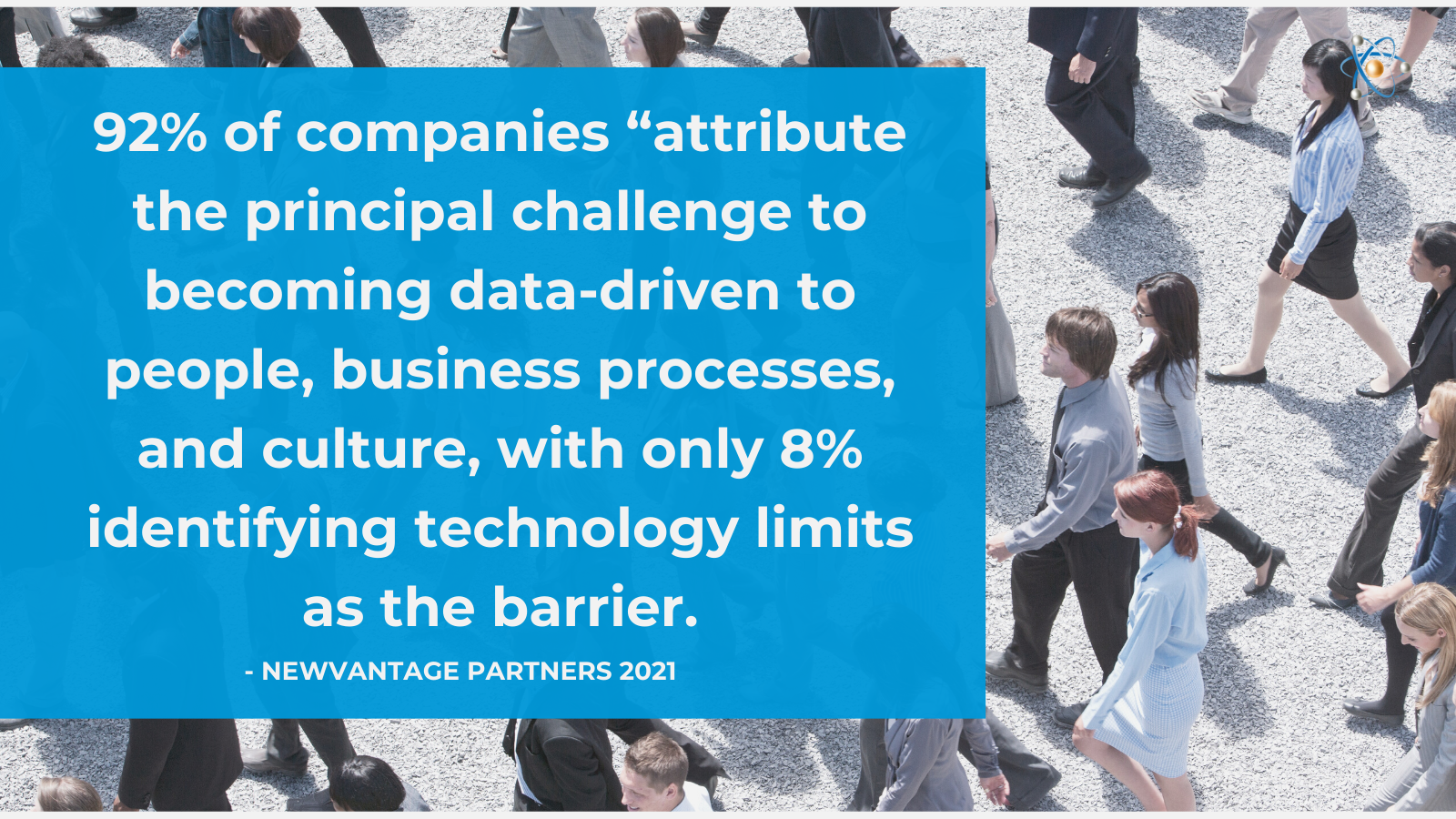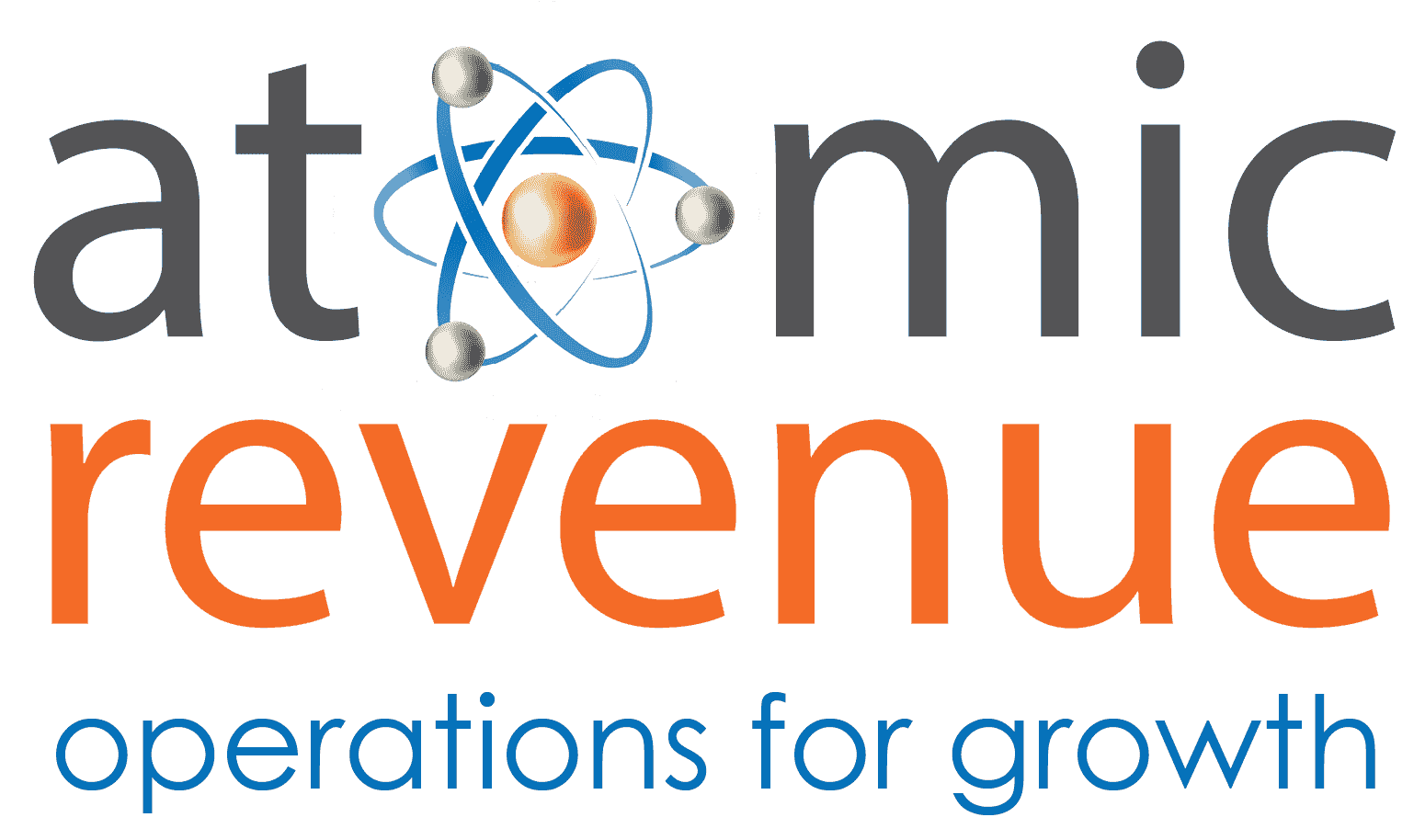.png?width=906&height=453&name=Atomic%20Revenue%20Blog%20Headers%20and%20Graphics%20(2).png)
In the modern business world, there are certain terms and phrases related to data that are important yet poorly understood because they’re often misused or made to seem overly complex. I’ve clarified the meaning of some of this terminology before, and today I want to talk about one specific adjective that you’ve probably seen countless times on LinkedIn, company websites (including this one), and business publications from Forbes to Fast Company: data-driven.
Of course, every company wants to say that they are data-driven, but what does that really mean? What separates the organizations that are “meh” at leveraging data to make business decisions from those that are using data to achieve substantial growth, outpace the competition, and enact organizational change nimbly and effectively? First, let’s take a look at how your company can use its most powerful data points – your Key Performance Indicators (KPIs) – to make better decisions and drive success.
Aligning KPIs With Business Strategy
The foundation of being a data-driven company is ensuring that your KPIs are synced with your organization’s strategic direction and the high-priority objectives that are tied to the fulfillment of your overall vision and mission. For your KPIs to deliver maximum value, they should be able to quickly inform you about business progress without requiring much additional interpretation or calculation. Poor KPI selection can lead to distracted management, wasted time, and misallocated resources.
Aside from not linking KPIs to strategy, there are several other mistakes businesses make in this area. Here they are:
Common KPI Mistakes
-
Treating all data equally
Having a large quantity of data points is to be expected, but trying to categorize too many of them as KPIs will lead to confusion.
-
Using the same KPIs as everyone else
Googling things like “most important marketing KPIs” and “best KPIs for manufacturing operations” is a good way to generate ideas, but just because a company you admire is focusing on certain metrics doesn’t mean you should, too.
-
Having KPIs that aren’t owned/championed
Every KPI should have at least one person within the organization who is responsible for its monitoring and who takes action when needed.
-
Linking KPIs too closely with incentives
Directly tying KPIs to bonuses or pay raises can be a dangerous business practice because it often creates unforeseen consequences and turns guiding metrics into targets that some may try to manipulate data to hit.
Keep in mind that your KPIs are there to guide decision-making by telling you where there’s room for improvement and where there may be opportunities to multiply success. They’re indicators, not the be-all, end-all. However, just because a KPI isn’t giving you the results you want doesn’t mean you should drop it and try to find one that better fits your narrative. If properly selected, your company’s main set of KPIs should stay locked in place long-term so you can develop an accurate picture of historical data trends by month, quarter, year, etc. It’s acceptable to occasionally adjust a few KPIs at the departmental level, but even then you should have evidence to prove to your colleagues and executives that the change will be beneficial.
The Grim Alternative to Being Data-Driven
For organizations that don’t take data seriously (or those that don’t have buy-in from top to bottom), it’s easy to defer to the intuition of those with the most experience who have “seen and done it all” – even if the data contradicts their gut feeling. Google’s longtime Digital Marketing Evangelist Avinash Kaushik came up with a term to describe this phenomenon: the HiPPO (highest-paid person’s opinion). What happens when the HiPPO is valued more than data? Nothing good. As the Financial Times put it:
“HiPPOs can be deadly for businesses because they base their decisions on ill-understood metrics at best, or on pure guesswork. With no intelligent tools to derive meaning from the full spectrum of customer interactions and evaluate the how, when, where and why behind actions, the HiPPO approach can be crippling for businesses.”
The good news is that it’s never too late to empower everyone in your organization with a better understanding of how data-driven insights are formulated and why they’re valuable. Data visualization solutions and free data analytics courses make increasing company-wide data literacy easier than ever. Even small steps made in the direction of increasing data skills and access have been shown to produce a significant revenue uplift.
Promoting Data Democratization
The most successful data-driven companies take a radically inclusive approach to sharing data throughout the business. After all, what good is data if people can’t access and understand it? Every member of the organization should be made to feel comfortable handling data and applying that information to their everyday decision-making. For data democratization to be effective, each employee needs information that is accurate, digestible, and regularly updated (ideally in real-time).
Even though the positive effects of leveraging data are so readily apparent, many firms have been slow or resistant to adopt widespread change: according to the NewVantage Partners 2021 Big Data and AI Executive Survey, only 24% of companies feel that they have created a data-driven organization. The same study also found that 92% of companies “attribute the principal challenge to becoming data-driven to people, business processes, and culture, with only 8% identifying technology limitations as the barrier.”

At face value, those numbers make sense – there are thousands of tools on the market today that aim to increase companies’ data access and analytical capabilities. How could technology possibly be the problem?
NEWS FLASH!
The real issue is that the vast majority of data technology doesn’t adapt to organizations’ existing infrastructure, not the other way around. In order for a company’s people, process, and data to work together in harmony to facilitate efficient end-to-end revenue production™, the technology must fit in with their existing culture. You can’t expect an entire business to stop and completely change how they operate at a moment’s notice.
An answer to the conundrum outlined above, dashboards are designed to save time and accelerate productivity for all companies that don’t have the data scientists, programmers, or analysts on staff required to make use of the complex, highly technical products you see advertised across the Internet today.
As a provider of straightforward, fully-managed data visualization solutions, Atomic Revenue enables organizations to become more data-driven by providing reporting clarity for every department and every business activity.
Atomic Revenue dashboards support KPI Management and Revenue Diagnostics programs in order to determine what’s working and what’s missing for profitable revenue growth across each stage of the buyer’s journey. Ready to receive automated clarity and achieve data enlightenment?
Contact us today for a no-obligation, free consultation to see how being data-driven can change your company's revenue outcomes.
 About the Author
About the Author
Liz, Chief Data Advisor at Atomic Revenue, is dedicated to developing technologies that make business data more accessible and comprehensible. Liz helps companies align their internal systems to make sure they're capturing the right data for their unique business needs, and then automates the reporting process to ensure each business has insight into the data and analysis they need to truly understand their revenue generation process.




